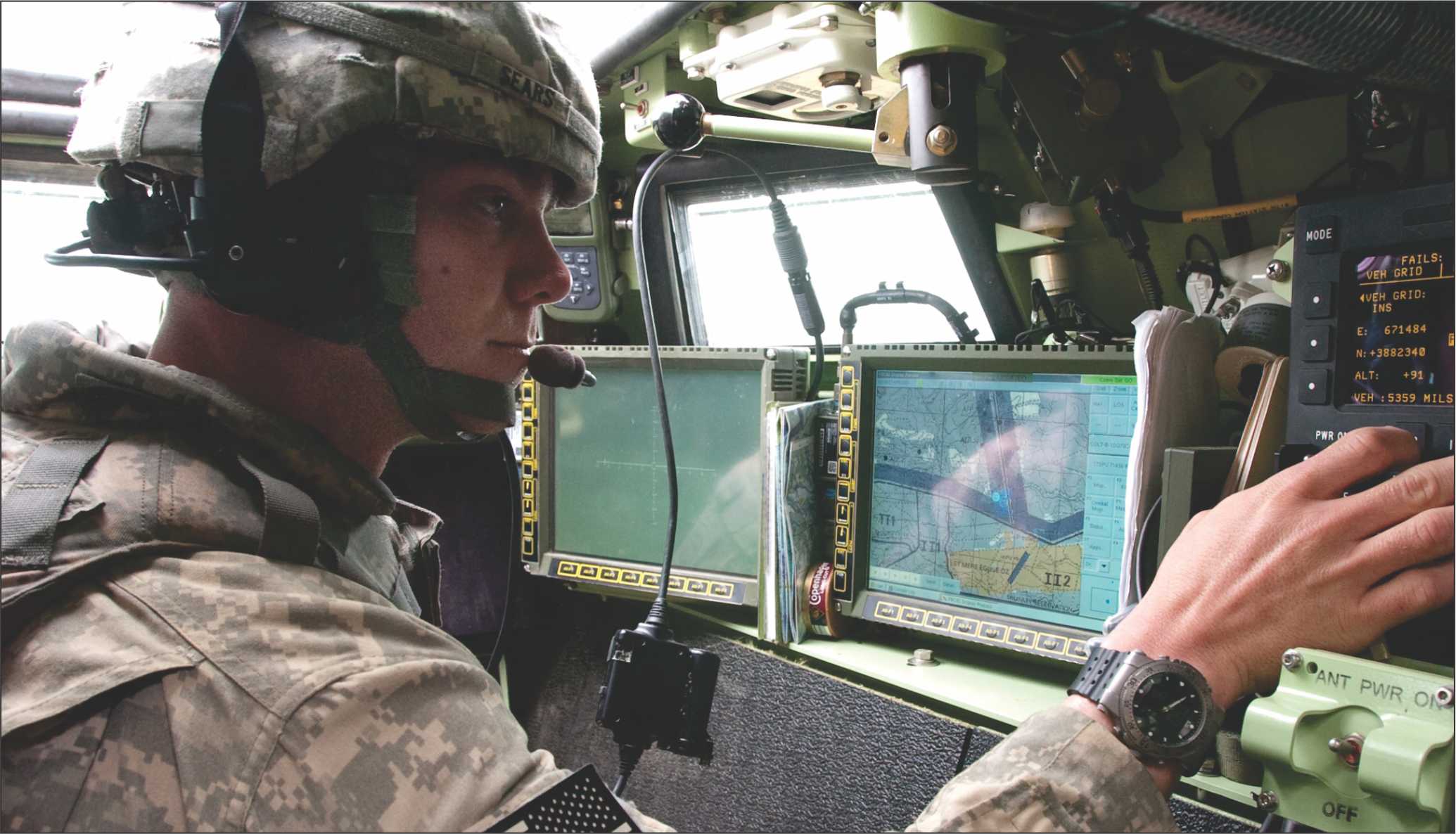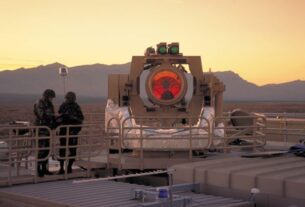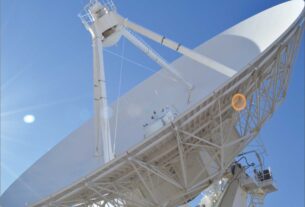The pace of electronic warfare is changing rapidly and in future it may assume a new dimension in which individual soldiers can conduct the war proceedings to take control of the battlefield while sitting away thousands of miles from the actual frontline zone.
It is all possible due to the advent of new technologies such as integrated EW systems which can self assess and determine the threat much before the threat can appear in the horizon.
Therefore, integrated electronic platforms, known as embedded systems, are becoming ever more significant in mobile military systems, whether for the navy, the air force or ground forces.
The complexity with which the various electronic systems interact is growing rapidly and is already a decisive factor in determining the success or failure of an operation.
The wide application of electronic information technology in the military sphere will integrate information with firepower, resulting in a new type of warfare. The competition for information in future 21st-century land operations will be based on computer technology.
With digital communication as the means, the information network collects and processes the data on the battlefield and utilizes these data in the weapon system to ensure efficient attacks against enemy forces, realizing automated, informationized, and intelligence capabilities to the greatest degree at every stage of operations.
Under the conditions of information warfare, armed forces will use satellites, high-altitude aircraft, helicopters and unmanned flying equipment, and sensors to collect and process information.
They can use digital communication techniques to transmit computer data within the information network and use digital modulators and demodulators to retrieve various information and command or control information.
This will display on the information complex with many forms like graphics, data, sound and images, so that the various command organs and units of the armed forces will have relevant intelligence regarding the fighting task.
In future land operations, the main activities will be the collection and processing, transfer and utilization, and competition for and countering of battle information. This will be the case during the whole process of the battle. The supremacy of information will replace the supremacy of forces and weapons and will be the key in winning the upper hand in the land operations and the guarantee for defeating the enemy.
The side with information supremacy, from the collection of information to command decisions, from detection and positioning to guided strike proceed with automation and at high speed, achieving quasi real-time or even real-time battle results and, discovering the enemy first, will strike first.
The traditional concept of “hard kill” and the negligence of “soft kill” apparently will not be suited to the future new situation on the battle fields.
The C3I system is the nerve center for all information-intensified weapons and military units. When summarizing the lessons of experience of the Gulf War, every country concluded that the C3I system will have a tremendous role in future warfare.
They emphasize that a dispersed C3I system that resists destruction is the orientation for development.
Satellite space telecommunications, reconnaissance, monitoring, navigation, and locator systems are the important component parts of the C3I. With improvement of the entire C3I system and satellite performance and widening of satellite applications, by 2020, high-level commanders may be able to know at once about events occurring on any spot on the earth.
This will enable pilots and tank drivers, as well as ordinary soldiers, to know accurately their own location on the earth at all times, and it will permit contact with higher-level command organizations anywhere. It will also provide real-time, continuous, accurate guidance information for pinpoint guidance of missile to targets as much as 1,000 km away.
The use of airplanes as carriers of highly mobile radar detection, command and control, electronic warfare, and telecommunications relay equipment or systems holds many advantages.
The C3I system of the future will have increased shared information among those engaged in combat, which most likely will develop into an integrated national defence information system.
There are two ways to integrate the C3I system into the high-speed information highway of individual countries: by resource sharing on the two-way communications portion of a network, and by serving as an integral part of the latter operating in coordination with it.
Because the C3I system has such an extremely important position in information-intensified weapons and military units, attacking and protecting the satellites that are an integral part of the C3I system, airborne early-warning and electronic-warfare aircraft, and ground command sites and telecommunications hubs will all become important forms of combat.
Now militaries are investing in the Advanced Integrated Defensive Electronic Warfare Suite (AIDEWS) which is a next-generation radar warning system.
AIDEWS is based on modular electronic warfare (EW) technology, meaning upgrade costs are shared and affordable.
AIDEWS has advanced off-the-shelf warning and jamming technology by an order of magnitude.
The system architecture incorporates a channelised digital radar warning receiver (RWR) that operates in high-density environments; a lightweight, high-performance digital RF memory (DRFM)-based jammer designed to defeat pulse, pulse Doppler and continuous wave threats; and leading-edge electronic warfare control capability.
The AIDEWS system has radar warning receiver capability as well as jamming capability, and searches the environment for anticipated radar threats. These could simply be acquisition-type radars that are looking for the plane as it enters a dangerous area, or they could be radars that are guiding weapons.
One of the best things about AIDEWS is that one can identify these threats well in advance. This gives the pilot the advantage of being able to take evasive manoeuvres, while at the same time knowing he is protected by state-of-the-art DRFM-based jamming algorithms.
AIDEWS can also be reprogrammed for any mission, defining which threats to look for, how to look for them and which type of jamming to perform when that threat is identified.
The system’s modular design also supports the substitution of both line replaceable units (LRUs) and shop replaceable units (SRUs) in the field without returning the entire system or pod.
Digital battlefield
A digitized battlefield is a composite network system covering the whole operational space. It is made up of a communications system, a command and control system, an intelligence transmission system, a computerized battlefield database, and user terminals, all of which can provide users with large amounts of operation-related information in real time or nearly real time.
This network system’s function is to use information technology to acquire, exchange, and use digitized information in real time, promptly meeting the information demand of commanders, combat personnel, and combat support personnel, so that they can clearly and accurately grasp all battlefield conditions needed to draw up and apply operational plans.
This system can transmit information such as voice, graphics, text, and data, and can also provide users with a battlefield image portrayed by a common database and the supreme battlefield command knowledge-base (including substance such as one’s own posture, the enemy’s posture, combat readiness, logistics conditions, and operating environment).
This picture is dynamic, changing with the movements of both combatants and changes in terrain and weather. A digitized battlefield is a prerequisite for information warfare.
The establishment of a digitized battlefield has many advantages. For instance, information sharing clarifies the position of the enemy and one’s own units, sharply lowering accidental injuries.
It enables battlefield commanders to amass key units at crucial sites at critical times; it can effectively coordinate short-distance, in-depth, and rear operations, providing intelligence support for all-out, in-depth, simultaneous offensive operations.
As all come to know the battlefield conditions, subordinate commanders can bring their initiative into play, acting promptly at their own discretion in line with their superiors’ intentions, it makes logistics support very accurate, for such activities as material provision variety and quantity accuracy, logistics support provision-time accuracy, and wounded treatment timely accuracy.
The establishment of a digitized battlefield is a sort of systems engineering. Many US military specialists claim that this project is more challenging than the Manhattan Project. To carry out this project, the United States is taking many steps.
Role of radar
Radar is an information-collecting device which was designed to adapt to aerial warfare weapon’s characteristics.
Its emergence made it possible to control air warfare and brought to an end the epoch when air warfare equaled blind men touching an elephant.
However, in the long period ever since, because of low-level of information technology, the command system was restricted to the realm of manual operation, thus the operation or capability of air power was heavily limited.
Since the 1950s, when collecting, transmitting, processing and using information were fused, the command system of air warfare has witnessed such a rapid development process manual operation command became semi-automatic command, which became automated command, resulting in the eventual appearance of integrated and automated C3I systems.
Radar and Electronic Warfare (EW) designers’ thirst for more and more data is driving innovation at the signal processing level as embedded computing suppliers work magic with FPGAs and processors to create intelligent, fast sensor networks.
The need to know where and when the enemy will strike is no less important today than when the allies cracked the allegedly unbreakable German Enigma code during World War II.
The only difference today is the sophistication of the technology on either side. Modern Electronic Warfare (EW) systems can detect, collect, and catalog just about every signal, while radar systems being developed today will be able to track dismounted personnel, small objects at sea, as well as enemy fighters. To make these capabilities possible, embedded computing wizards are packing as much processing power as possible at the payload level on the platform, right next to the sensor.
They mix together components such as GPGPUs, multicore processors, FPGAs, and complex software algorithms in different configurations designed to meet the low Size, Weight, and Power (SWaP) requirements demanded by their military customers.
Indeed, sensor technology and the need for greater bandwidth are driving military electronics designs, especially in radar and electronic warfare applications.
The only problem with increasing bandwidth on the sensors is the ability to stream data over the RF links is still poor. Therefore, the focus going forward is to move the processor next to the sensor.
Today’s sensor systems can detect everything, so integrators want to process that sensor data and extract all they can out of it at the sensor level before they transmit it to the warfighter.
There is a trend toward smaller and cooler systems, especially with the vast majority of upgrades being just a refresh of existing equipment.
There are some common themes that span across EW, radar and communications that are going to underpin future system design.
These include the ability to operate across wider bandwidths and at higher frequencies while generating suitable output power in the transmit chain or offering sufficient low noise capabilities in the receiver.
Practical requirements related to portability, flexibility and modularity also dictate design and other considerations include cost and reliability.
This can all be arguably categorized under the SWaP-CR (Size, Weight and Power-Cost, Reliability) moniker and can be applied across EW, radar and communications system design.
From a component perspective, the choice between using solid state semiconductors and tube-based solutions has also traditionally been dictated by system design requirements.
Solid-state technologies have typically been divided between solutions that are able to operate across a broad range of frequencies and those able to provide high output powers.
This has traditionally resulted in solid-state solutions being restricted to specific end applications with technologies chosen based on best fit solutions related to frequency and power output requirements.
TWT-based solutions on the other hand have been able to provide the widest range of capabilities with broadband performance coupled with high output powers, and are generally able to offer higher overall system efficiencies.
However, these technologies typically require specialized production expertise, while operation requires very high voltage supplies and practical utilization has traditionally been restricted in terms of supporting systems.
Yet, global spending on EW is forecast to grow to over $9.3 billion through 2022. With troop withdrawals in Iraq (complete) and Afghanistan ongoing, spending on land/ground-based EW platforms and systems will see a sharp decline with the total number of land-based EW (EA) equipment (e.g. jammers) shipments dropping by 46 per cent.
However, the withdrawal from these theatres will not change the general trends towards asymmetric warfare and the use of IEDs will continue to proliferate as they become a common weapon of choice for criminal gangs to insurgencies to terrorists with global reach, leading to market demand recovery for land-based EW systems.
Nations will look to leverage the experience gained from Iraq and Afghanistan to allow troops to operate in similar situations moving forwards to counteract the threats of IEDs and RCIEDs.
The evolution of platforms will move beyond jammers that simply barrage the environment with signals, but also block friendly communications, to selective and reactive jamming capabilities.
There will also be a move towards dismounted and portable jammers that will allow the development of smaller lightweight personal protection devices.
Vehicle mounted and man-portable units will continue to account for close to 100 per cent of this demand.
Land-based EW (EA) equipment used for jamming are typically focused on communications frequencies and this is reflected in the segmentation with the emphasis increasingly on providing capabilities that can cover as much of the spectrum as possible.
Finally there will be development of multi-mode equipment that merge C-IED and communications jamming.
Encryption of EW platform
Besides the integration of EW and C4I functionalities within the mobile system (ship, aircraft, etc.), special attention still needs to be paid to communication interfaces and network transition points.
The mobile systems have to communicate with their operational command centre and command posts.
They also have to be able to contact units of other branches of the service in the context of joint operations (e. g. for direct communication between aircraft, ships and ground units).
Protection against undesired eavesdropping on or falsification of transmissions is vitally important in this situation.
An integrated overall design does not in any way mean that all components in an integrated electronic platform come from a single manufacturer.
Numerous defence applications have specific requirements, especially with respect to communication security such as specified encryption systems for specified manufacturers or specified national algorithm and demand for high-security encryption, which certain integrators cannot provide themselves due to export restrictions.
Encryption solutions from Crypto AG, especially for radio and networks, have standardised interfaces and are tested for environmental compatibility. These traits make them ideal for use as components of integrated EW platforms.
The integration of electronic aids in tactical contexts is a major milestone in the technological advances made in the defence sector.
The advent of commercially mature total solutions that effectively cover multiple functionalities enables transport and combat platforms to be developed more quickly and economically and simplifies maintenance.
Through its collaboration with relevant integrators, Crypto AG ensures that its top quality encryption solutions for communication security can be integrated optimally into current and future integrated platforms.
However, one must put effort into information technology, information weapons systems, and information networking. These are the important aspects of hardware construction for the military when adapting to information warfare.
Information is a material good, and information sources, information channels, and information storage are all material goods.
The gathering, transmission, processing, and use of information and the development of information into combat power all depend on certain material goods, energy, and technology carriers. Information technology itself is a pinnacle of high technology.
The key technologies are remote-sensing technology, communications technology, and computer technology. Key information weapons include precision-guided weapons systems and electronic warfare weapons systems as well as C4I systems which form the central nervous system.
These hardware items are necessary and essential to adapt to and achieve victory in information warfare, Yet, developing this hardware, however, is not easy.
It will be restricted by the level of information technology base and funds. Hence, comprehensive consideration must be given to the direction, goals, and emphases of this development.
Timely information
The goal is to obtain timely information, to understand the enemy and ourselves, and to achieve clarity about situation with great determination. It is especially necessary to establish a strategic reconnaissance warning and air defense system to achieve a capacity for early detection of enemy movements, in order to be forewarned and ready.
The most important of these are air defence weapons systems, offensive tactical guided missile attack systems, landing and touchdown operations equipment systems, electronic warfare equipment systems, and underwater mine laying systems.
These will give over-the-horizon, high-precision, concealed, sudden defensive attack capability and a stronger survival capacity and make the enemy terrified and worried, providing an effective threat.
On the top of it, one should establish battlefield information networks and battlefield databases for the battlefields in priority strategic directions.
By bringing all branches of the military into an information network, information may be shared on the network. Near-real-time communication can be gained in all directions and a better solution can be achieved for the problem of vertical and horizontal coordination in warfare.
For, information warfare uses firepower and command to obtain and to deny information, to suppress and counter suppress, and to deceive and counter deceive, as well as to destroy and counter the destruction of sources of information.
It is also warfare to win people’s minds and boost morale by employing television, radio broadcasting, and leaflets focused on the use and prevention of use of information.
Information warfare and firepower are closely linked. Information warfare is used to find and attack targets for firepower. Full use of information warfare is a prerequisite for full use of firepower.
This is expressed clearly in precision guided weapons, as well as in the tracking, aiming, reconnaissance, and fire control of all guns.
Information warfare includes countering C3I systems and ensuring the security and accessibility of one’ own lines of communications, the effective operation of ones own detection equipment, making sure that it is not jammed or damaged; and the normal operation of ones own numerous combat command computers, protecting them from damage by computer viruses.
At both the strategic and campaign levels in information warfare, it is important to decipher and analyze information and to prevent information from being obtained and deciphered.
A newly conceived weapon that will appear in the 21st century is the high-performance microwave weapon that will use powerful electromagnetism to destroy the opponent’s electronic equipment and electronic telecommunications systems, thereby rendering enemy weapons ineffective.
This is a special kind of information-intensified weapon for waging information warfare.
Information capability includes information support for command, operations, precision strikes, and logistical support that military units need to carry out missions.
The equipment that supports this capability is the C3I system, electronic warfare systems, and precision-guided weapons.
A military unit’s information capability equals its combat capability. Like precision-strike capability or an air- defense capability, it is absolutely indispensable to high-technology warfare and may be the most important combat capability.
The term information superiority means the party that has the strongest information capability between two opposing parties in combat.
In future high-technology warfare, not only will one would have to gain air and sea superiority, but even more important, one will have to win information superiority first of all.
Information warfare will be the most complex type of warfare in the 21st century, and it will decide who will win and who will lose the war.





